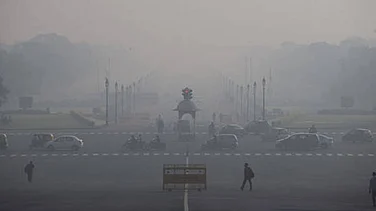On the morning of July 3, Phulrai, which lies on the outskirts of Hathras district, looked like a ghost village. Torn slippers of women and children, hair bands, water bottles, broken bangles and other personal belongings were left strewn. The village was left haunted by a stampede that broke out the previous day during a satsang (religious congregation) held just a few kilometres from the village. As per official records, 121 people were killed, most of them women and children. The horrific incident stirred up the debate on the controversial industry of godmen in India and why they continue to be in demand despite their nefarious activities.
In Outlook’s upcoming issue, reporters bring you stories on this multi-million dollar industry of godmen and godwomen across the country, their satsangs and what draws followers to them. In Hathras, the Baba at the centre of the recent tragedy is Baba Bhole Nath aka Surajpal Singh Jatav, cop turned baba who claims to have healing powers. Most of his followers are women, especially from the Dalit or backward communities.
Meanwhile, in Mumbai, the glamorous spiritual guru and self-styled godwoman Radhe maa, also alleged to be a conwoman has her own following despite making headlines for her bizarre actions. In another metropolitan city, Delhi, several victims of Baba Virendra Dixit of Rohini, who were found in “animal like conditions” in 2020, have willingly come back to the ashram despite being emancipated.
Not just these godmen, several churches in Kerala and Punjab have become centres of such cult practices, peddling miracle cures and promising instant salvation. Many of these godmen have also been jailed previously for their actions. But why is this culture still prevalent in India? Why do people feel the need to visit satsangs and meet such godmen? Outlook’s next issue will explore these questions.
















